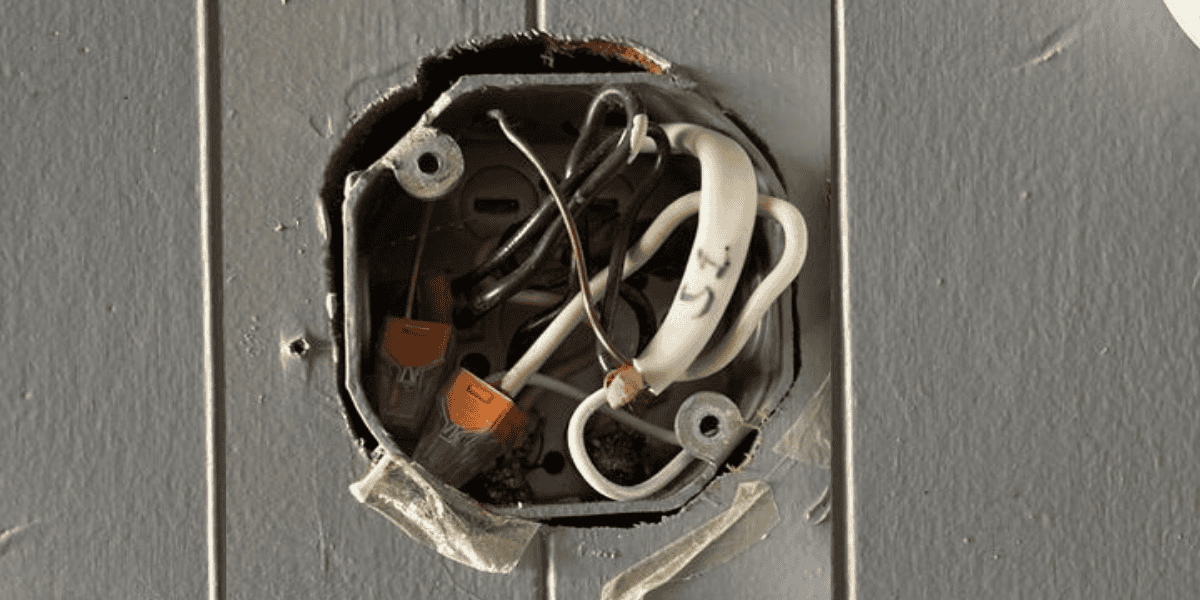The Concerns with WAGO Connectors in Iowa Homes
July 26th, 2025
4 min read

You expected to see the usual twist-on cap, but instead, there’s a small clear plastic block with levers or push-in holes holding the wires. It looks a bit like a toy, which raises a fair question: Is this really a reliable connection?
Some contractors use WAGO connectors to save time. But in our experience, they don’t hold up well, especially in older homes.
At Integra Electrical, we’ve worked in thousands of homes across the Des Moines area. We’ve removed WAGOs that were working fine, and others that showed clear signs of failure.
Before the end of this article, you will know
- The two biggest problems with WAGOS
- What to watch for in your home
- What to do if you find WAGOS in your home
Loose Connections Can Lead to Overheating an Arcing
The way WAGO connectors grip the wire is simple: a spring holds each wire in place. But over time, wires expand and contract with temperature changes. That small movement can loosen the wire, especially if the connector wasn’t installed correctly.
When a connection starts to loosen, it can create resistance. Resistance generates heat, which can slowly wear down the insulation or affect surrounding components.
We’ve opened outlet boxes that looked perfectly normal from the outside, only to find heat damage inside. While it doesn’t happen every time, we’ve seen enough of it to raise concerns, especially in older homes where the wiring already has some wear.
We found this during a routine service visit. One of the connectors inside had come loose, causing the wires to overheat and burn. Thankfully, it was caught before things got worse, but this shows how something small behind the wall can cause real damage over time.
 When a wire isn’t held tightly enough inside a connector, the electrical current may not flow as smoothly. In some cases, the current starts to “jump” across small gaps within the connector, a process called arcing.
When a wire isn’t held tightly enough inside a connector, the electrical current may not flow as smoothly. In some cases, the current starts to “jump” across small gaps within the connector, a process called arcing.
Arcing often happens quietly and leads to visible wear, like blackened connectors or damaged insulation.
According to the National Fire Protection Association (NFPA), arc faults are a common issue when it comes to aging or damaged wiring, especially where connectors have loosened or degraded over time. While arcing can occur with any type of compromised connection, we’ve seen it happen in homes where WAGO connectors didn’t maintain proper contact.
When "Quick and Cheap" Leads to Long-Term Issues
WAGO connectors are marketed as fast and simple. But that same ease can lead to problems, especially in rushed jobs or DIY repairs.
We’ve seen WAGO connectors installed:
- With wires that weren’t stripped properly
- Only partially inserted
- Reused when they should have been replaced
- On wire types the connector wasn’t rated for
Unlike wire nuts, which require twisting wires together to form a bond, WAGOs rely solely on spring pressure. If something is slightly off, it can affect performance over time. Wire nuts take more time to install because the wires are physically joined, not just clamped. It’s a hands-on process that takes skill and care, but it results in a more secure, durable connection that’s far less likely to fail down the road.
When to be Extra Cautious & What to Watch for
Not all wire connections are created equal, and not every connector is suited for every type of wiring. WAGO connectors have more limitations than most homeowners realize.
Here are a few situations where we’ve seen WAGOs fall short:
- Aluminum Wiring - Most WAGO connectors aren’t rated for aluminum, which expands and contracts more than copper. That movement can weaken the connection.
- Stranded Wire - Stranded wire, common in lighting and appliances, behaves differently from solid copper. Some WAGOs don’t grip it well, especially over time.
- Vibration-Prone Areas - Places like ceiling fans or under-cabinet lighting involve motion. We’ve seen connections work loose in these conditions.
- Overcrowded Electrical Boxes - WAGOs are compact, but tight boxes with poor airflow can trap heat. We’ve found scorched connectors packed too closely together.
These aren’t rare edge cases. They’re common situations in the homes we service every day.
If you’ve had electrical work done in recent years, there’s a chance WAGO connectors were used, especially during fast-paced jobs. While you may not see the connectors, you might notice signs that something isn’t quite right.
Watch for:
- Warm or Hot Outlet Covers - Unusual warmth may signal a connection that isn’t holding properly.
- Flickering or Buzzing Lights - These may point to an unstable connection, not just a bulb issue.
- Unusual Smells or Discoloration - A faint burning smell or a discolored wall plate could indicate trouble inside.
- Outlets That Randomly Stop Working - If power cuts out and returns without a tripped breaker, it could be a loose connection.
- Recent Work Done Quickly - Fast jobs sometimes rely on quick-install connectors. If you're unsure, it's worth getting checked.
These signs don’t always point to WAGOs, but they’re a good reason to call a licensed electrician.
A Shortcut Isn't Worth the Risk
Wiring connections might not be visible, but they’re critical. And from what we’ve seen, WAGO connectors often don’t deliver the long-term reliability that homeowners expect.
At Integra Electrical, we don’t use WAGO connectors. We use tested, durable methods that give us, and our customers, lasting confidence. It takes more time, but it’s worth it.
If you're unsure what kind of connectors are behind your outlets, switches, or fixtures, we can help. Whether you’ve seen signs of trouble or just want a second opinion, we’ll take a closer look and walk you through your options clearly and honestly.
Not sure what’s behind your outlets? We can inspect your wiring and make sure WAGOs aren’t putting your home at risk.
Frequently Asked Questions
How do I know if my home has WAGO connectors?
They’re usually small, clear plastic blocks with colored levers or push-in holes. You may spot them if you remove an outlet or switch cover. If you’re unsure, a licensed electrician can safely check for you.
What’s the difference between WAGOs and wire nuts?
Wire nuts physically twist wires together, creating a bonded connection that’s harder to loosen. WAGOs rely on spring pressure alone, which can weaken over time, especially with heat, vibration, or older wiring. WAGOs are a faster but unsafe solution.
What are the warning signs of a failing WAGO connection?
Look out for warm outlet covers, flickering lights, buzzing sounds, burning smells, or outlets that stop working intermittently. These symptoms suggest a loose or unstable connection that needs immediate attention.
Can I replace WAGO connectors myself?
It’s not recommended. Working with live wiring can be dangerous, and improper replacement can create new hazards. A licensed electrician can ensure the connections are safe, secure, and code-compliant.
Does Integra replace WAGOs during service calls?
Yes. If we find WAGOs that pose a risk, we’ll walk you through the options for replacing them with more reliable connections. Our goal is to ensure your wiring is safe and built to last.
Daniel Carpenter is a licensed electrician on Integra’s installation team. He got his license at just 19, but he's been around the trade his whole life. With five years on the job and a heart for helping homeowners, Daniel takes pride in doing quality work that serves the local community.


